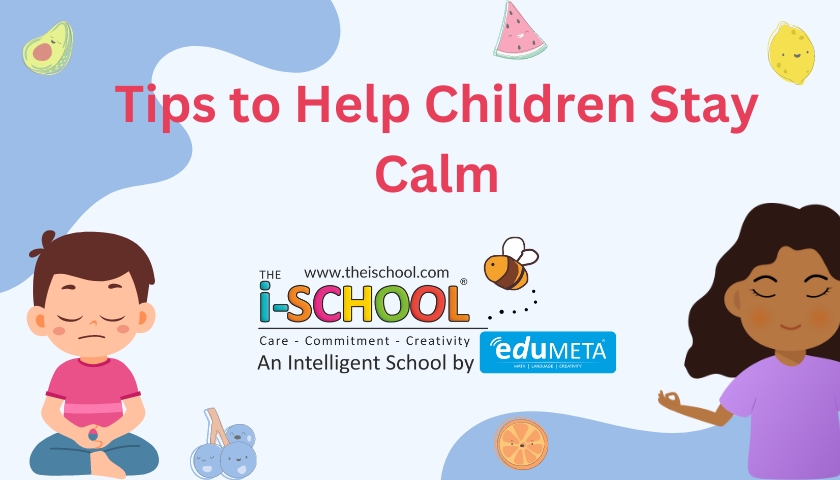Tips to Help Children Stay Calm

Helping children stay calm is essential for their emotional well-being and overall development. Children often encounter various stressors, from school pressures to social interactions, and need effective strategies to manage their emotions. Here are some practical tips to help kids keep calm in different situations.
1. Teach Deep Breathing
Simple Breathing Exercises: Encourage your child to practice deep breathing when they feel overwhelmed. Teach them to take slow, deep breaths in through the nose and out through the mouth. This can help reduce anxiety and promote relaxation.
Breathing Techniques: Introduce fun breathing techniques like “balloon breathing” where they imagine inflating a balloon with each inhale and slowly letting the air out with each exhale.
2. Create a Calm Environment
Quiet Space: Designate a quiet, comfortable space in your home where your child can go to relax and unwind. This can be a cozy corner with soft pillows, a favorite blanket, and calming toys or books.
Soothing Activities: Encourage activities that promote calmness, such as listening to soft music, drawing, or reading. These activities can help distract and soothe an anxious mind.
3. Encourage Physical Activity
Exercise: Regular physical activity is a great way to reduce stress and keep kids calm. Encourage your child to engage in activities they enjoy, such as playing outside, riding a bike, or participating in a sport.
Yoga and Stretching: Introduce your child to simple yoga poses and stretching exercises. These activities can help them relax and focus on their breathing.
4. Teach Mindfulness and Meditation
Mindfulness Practices: Teach your child mindfulness techniques, such as paying attention to their senses (what they see, hear, smell, touch, and taste) or focusing on their breathing. Mindfulness helps children stay present and manage their emotions.
Guided Meditation: Use guided meditation apps or videos designed for children. These resources can provide step-by-step instructions to help them relax and meditate.
5. Model Calm Behavior
Stay Calm: Children often mimic the behavior of adults around them. Model calm behavior by managing your own stress effectively. Show them how to stay composed and handle challenging situations with patience.
Positive Reinforcement: Praise and reinforce calm behavior when you notice your child using coping strategies effectively. Positive reinforcement encourages them to continue using these techniques.
6. Establish Routines
Consistent Schedules: Maintain a consistent daily routine for your child. Predictable schedules provide a sense of security and help reduce anxiety.
Bedtime Routine: Establish a calming bedtime routine that includes activities like reading, taking a warm bath, or listening to soft music. A consistent routine can improve sleep quality and overall well-being.
7. Encourage Healthy Communication
Expressing Feelings: Encourage your child to talk about their feelings and emotions. Let them know that it’s okay to feel upset or anxious and that you are there to listen and support them.
Active Listening: Practice active listening by giving your full attention when your child speaks. Validate their feelings and help them find solutions to their concerns.
8. Use Visual Aids
Calm Down Jar: Create a “calm down jar” with glitter and water. When shaken, the glitter swirling around can help distract and soothe your child as they watch it settle.
Emotion Charts: Use emotion charts to help your child identify and express their feelings. This can help them better understand their emotions and find appropriate ways to cope.
9. Limit Screen Time
Balanced Screen Use: Monitor and limit your child’s screen time, especially before bedtime. Excessive screen time can contribute to anxiety and interfere with sleep patterns.
Engage in Offline Activities: Encourage your child to engage in offline activities that promote relaxation and creativity, such as playing with toys, doing puzzles, or spending time outdoors.
Conclusion
Helping children stay calm is essential for their emotional and mental well-being. By teaching deep breathing, creating a calm environment, encouraging physical activity, and modeling calm behavior, parents can provide the support and tools their children need to manage stress effectively. At eduMETA THE i-SCHOOL, we are dedicated to supporting parents and caregivers with resources and strategies to promote a calm and nurturing environment for their children.
